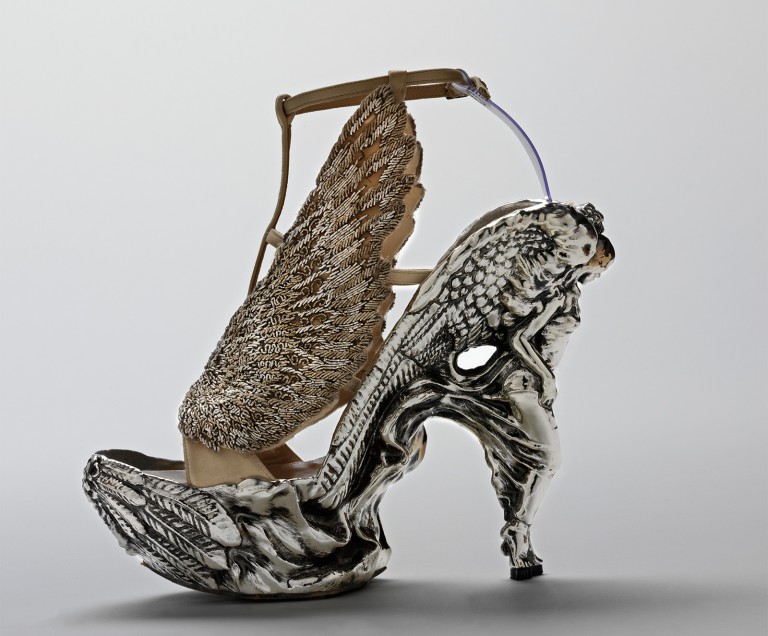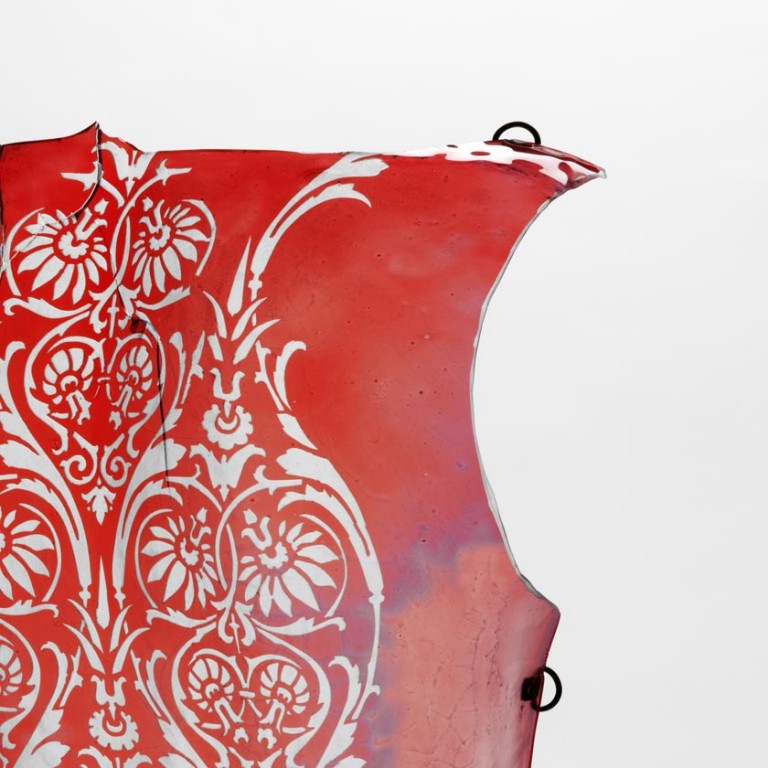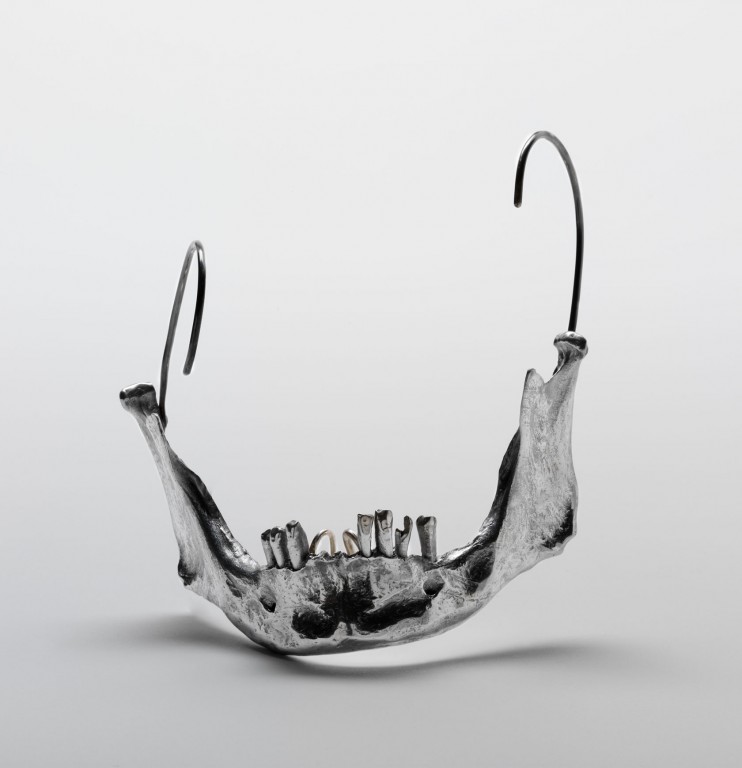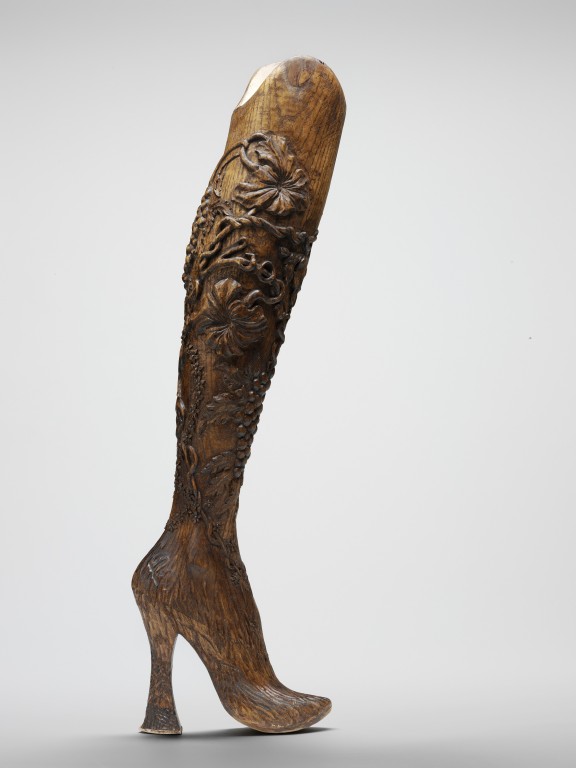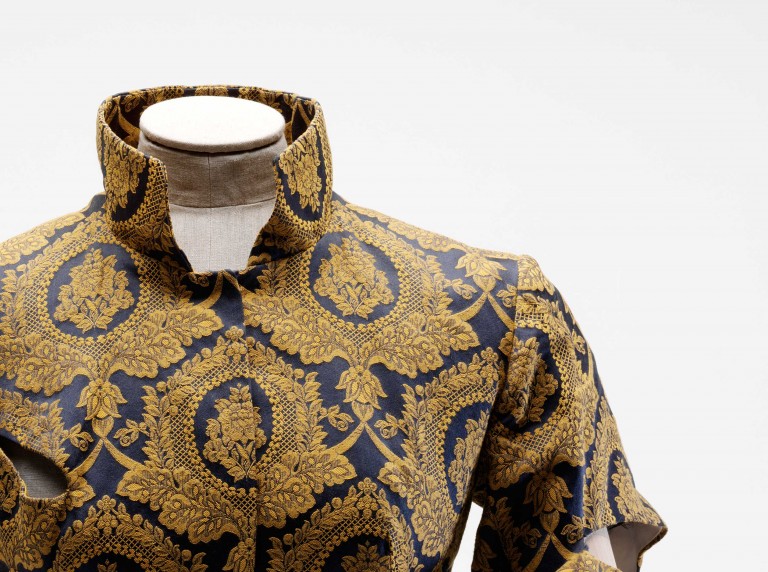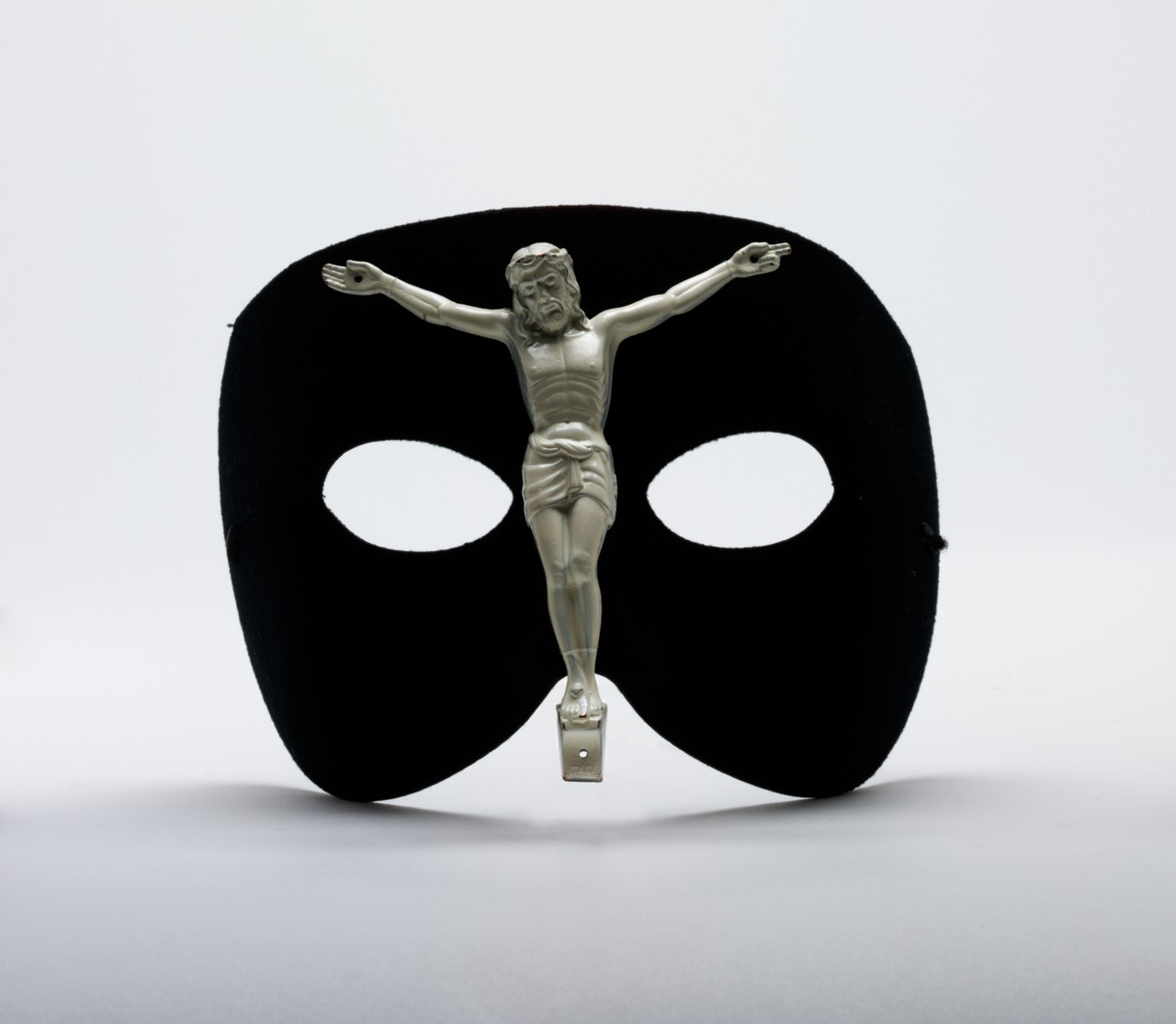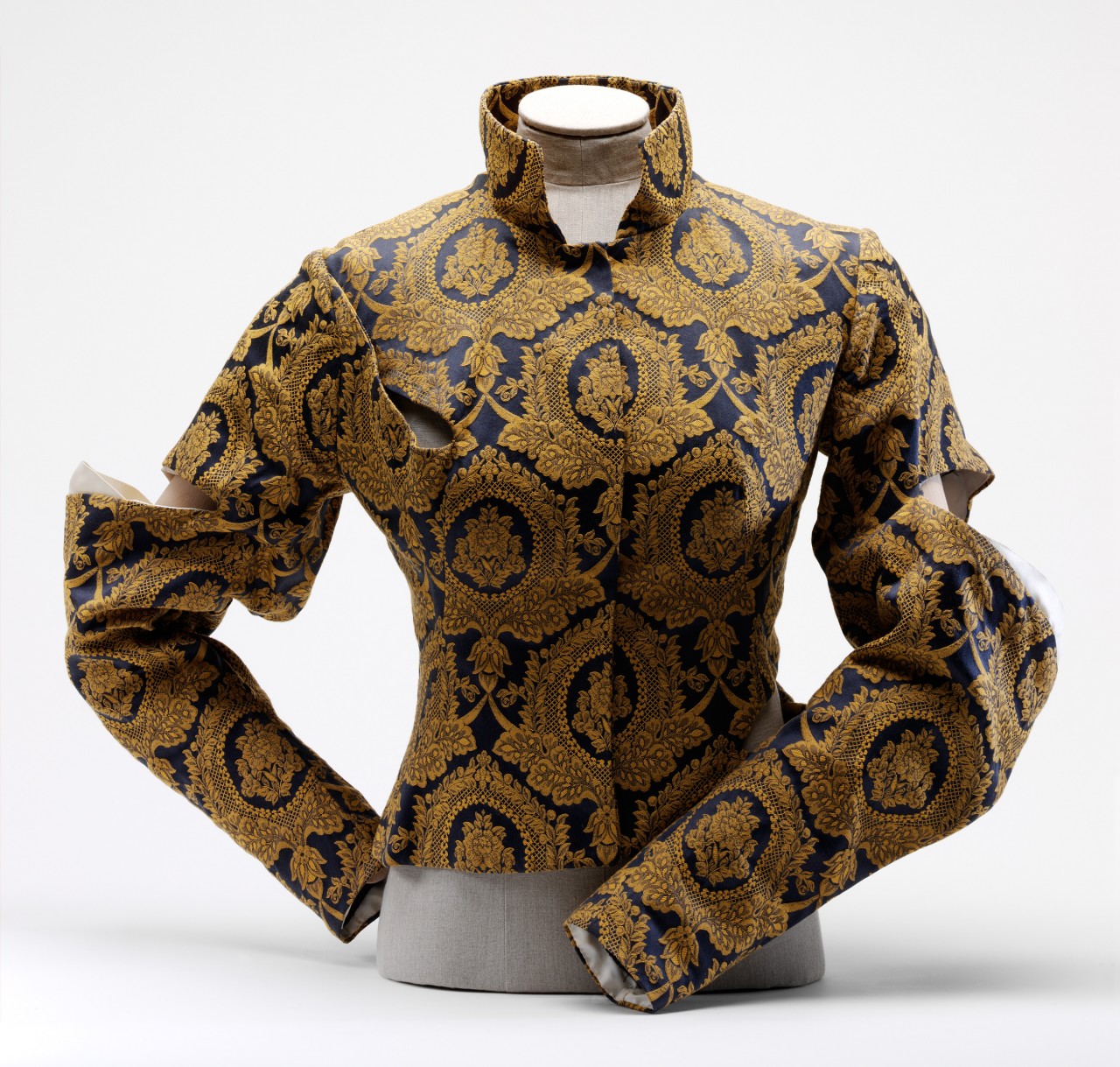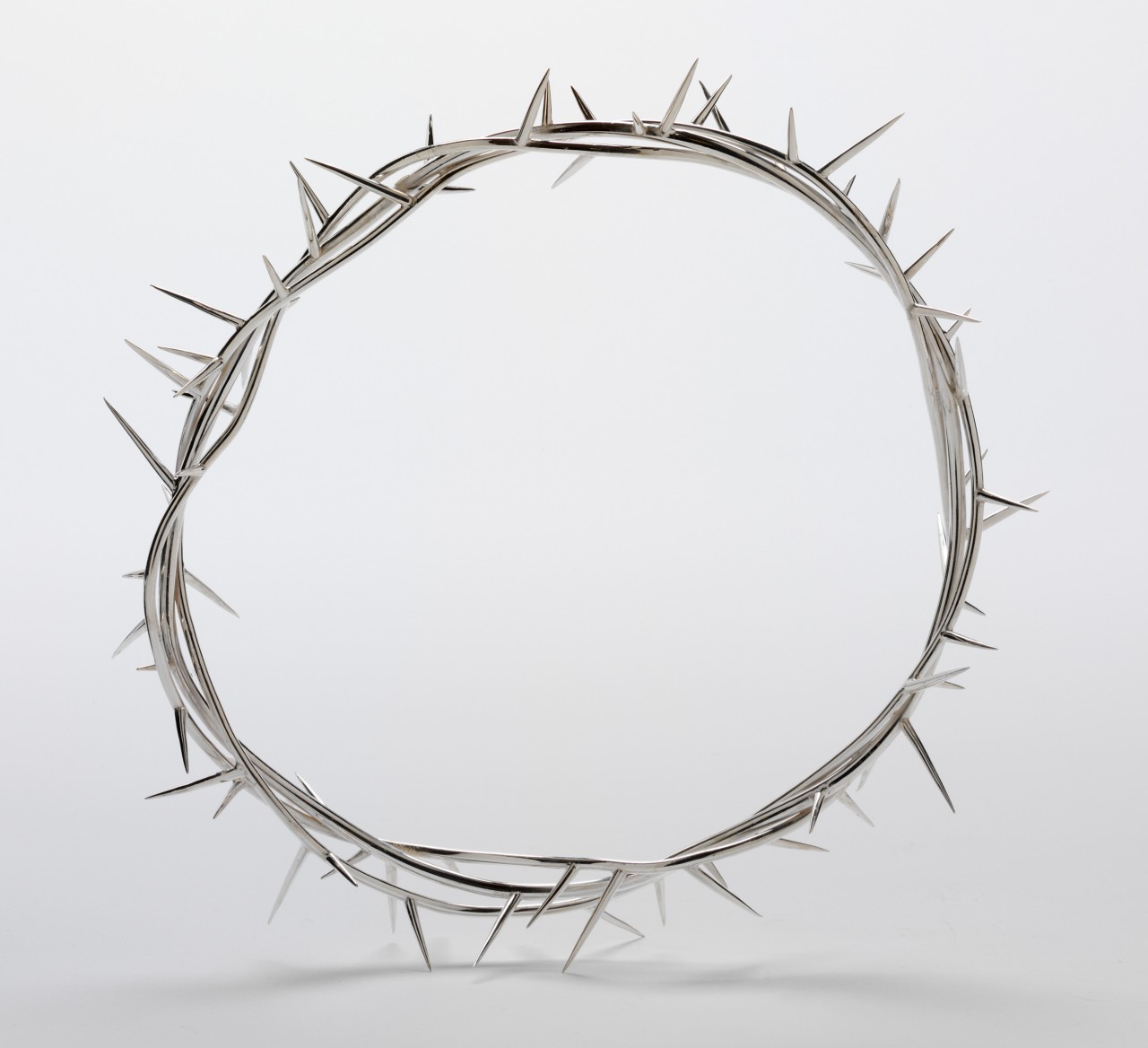ENCYCLOPEDIA OF
COLLECTIONS:
DANTE
McQueen’s Autumn/Winter 1996 collection – dedicated to Isabella Blow - was presented in the dramatic setting of Nicholas Hawksmoor’s Christ Church in Spitalfields, east London. The Baroque edifice was a pertinent choice of venue as McQueen had learned from his mother that his family had descended from the Huguenot immigrants who had moved to the area in the 1680s. The fashion press were anxious to see what McQueen would present in a place of worship. They were not disappointed. Guests, among whom a skeleton was seated, overlooked a runway in the shape of a cross; the sound of a missile gave way to club beats mixed with organ music and salvos of gunfire. The first show to feature Kate Moss as a model, it set a new theatrical precedent for McQueen.
Ostensibly named after Dante, the fourteenth-century Florentine poet, who presented in his Divine Comedy an allegorical vision of the afterlife, the collection was a commentary on religion, war and innocence. Religious iconography and brutal images of conflict abounded. Black and white photographs of social pariahs, including a nineteenth-century colony for the blind, and Don McCullin images of the Vietnam War were printed on jackets and coats, creating a poignant contrast to the luxurious fabrics beneath. McQueen also borrowed from his favourite photographic artist Joel-Peter Witkin, in particular the mask with the figure of Christ crucified, which he took from Witkin’s Portrait of Joel, New Mexico (1984). Fourteenth-century Flemish paintings – a genre McQueen greatly admired – also found expression in the slashed sleeves, erect collars and layered clothes that he assimilated from figures in paintings by Jan van Eyck and Hans Memling.
Statuesque models draped in black lace veils, and a corset of black lace and jet beading laid over a ground of soft purple (the colour of Victorian ‘half’ mourning), signified McQueen’s ability to find beauty in death as the soundtrack gave way to Samuel Barber’s ‘Adagio for Strings’. McQueen, however, harnessed the melancholic with the energy of British street culture, by pairing his creations with frayed and bleached denims.
Accessories and styling were integral. A Philip Treacy headpiece of stag’s skull and antlers and a lace cap with withered hand by Simon Costin invoked memento mori, while a crown of thorns by Shaun Leane connected with the collection’s religious undercurrent. Whereas some models appeared as innocents with nails seemingly driven through their hands, others looked fierce with spikes projecting through scraped back hair and metal thorns that appeared to burst through the skin. Dante was presented twice, the second show staged in a disused synagogue on New York’s Lower East Side.

